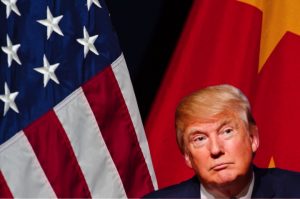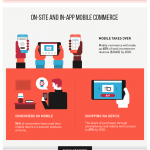2 Solutions for Shippers Dealing with Tariffs on Chinese Goods

Picture of Donald Trump by Michael Vadon. U.S. & Chinese flags added.
This blog provides two solutions shippers can utilize to mitigate or avoid financial losses from the new tariffs the U.S. is levying on Chinese goods. But first, a quick look at what’s happening with tariffs between the two countries.
The trade war between the U.S. and China is officially full-blown. 10% tariffs on $200 billion worth of Chinese products will hit on Monday. While there is some good news for U.S. importers that these tariffs were reduced to 10% from 25%, the tariffs are obviously still very costly for businesses importing goods from China. And when the new year rolls around, the costs increase; the tariffs are set to jump to 25% on January 1st.
That tariff jump is not the end of the increasing of U.S. duties on Chinese goods. A few days ago, September 17th, President Donald Trump said the following in a statement:
Today, following seven weeks of public notice, hearings, and extensive opportunities for comment, I directed the United States Trade Representative (USTR) to proceed with placing additional tariffs on roughly $200 billion of imports from China. The tariffs will take effect on September 24, 2018, and be set at a level of 10 percent until the end of the year. On January 1, the tariffs will rise to 25 percent. Further, if China takes retaliatory action against our farmers or other industries, we will immediately pursue phase three, which is tariffs on approximately $267 billion of additional imports.
It certainly seems like President Trump will be moving the U.S. into that third phase of tariff increases as Lingling Wei and Jacob M. Schlesinger reported yesterday in the Wall Street Journal that China is retaliating:
“The Chinese government said Tuesday it plans to impose new tariffs on $60 billion in U.S. exports…”
So as this trade war continues to escalate, what can shippers who import from China do?
Here are two solutions that Universal Cargo can help you with to keep your business profitable.
Solution 1: Request Exclusion
We can help you through the tariff exclusion process that can keep you from paying these tariffs on your imports.
Universal Cargo’s own Cherry Chen blogged about a Section 301 Tariff Exclusion Process that shippers can utilize to keep these tariffs from raising their costs on products they sell, but can this process actually work for your imports?
Big companies like Apple are managing to get exclusions because they can afford hiring attorneys to fight on their behalf. Small to medium sized importers often can’t pay the $5k-30k, depending on the size of the job, attorneys would normally charge for these types of services.
Our customshouse broker, INLT, here at Universal Cargo can help our clients submit the letter or request for exclusion, fighting on our clients’ behalf to get their imports from China excluded from these costly tariffs. All this at a fraction of the cost of what attorneys are typically charging for this service.
You can find out more by calling your Account Manager or giving Universal Cargo a call at:
Solution 2: Source Away from China
The other solution to these rising costs on imports from China is to import your goods from other countries. This is another area Universal Cargo can help you with.
The entire point of importing from China is getting goods or materials for goods you manufacture at a cost that allows your business to make a profit. If these tariffs are killing or cutting into your profits, it could be time to consider another option for sourcing your goods or materials.
Let our dedicated team help you with a better sourcing option for your business.




